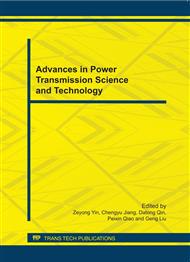p.547
p.552
p.556
p.562
p.566
p.570
p.574
p.579
p.584
Mechanisms of Synchronous Belt Tooth Failure due to Fatigue Shear Fracture
Abstract:
Conformal mapping with complex function based on plane elasticity mechanics is an analytical method for resolving stress and displacement at any point of a half-plane domain. Using complex function conformal mapping method in this article we investigated the relationship between load on tooth surface and maximum stress at tooth root for calculating the maximum compressive stress on the opposite side of working flank and maximum tensile stress on working flank side when loads are applied to tooth top and root of working flank side, respectively. The maximum tensile and compressive stress at the tooth root are the main forces that cause fatigue cracking of the tooth root, which may extend along the elastomer compound-cord interface resulting in shear cracking of the belt tooth. The results of our calculation reveal the mechanisms whereby tooth shear cracking causes fatigue failure of synchronic belt, which are consistent with the experimental research results of Lizuka.
Info:
Periodical:
Pages:
566-569
Citation:
Online since:
August 2011
Authors:
Price:
Сopyright:
© 2011 Trans Tech Publications Ltd. All Rights Reserved
Share:
Citation:


